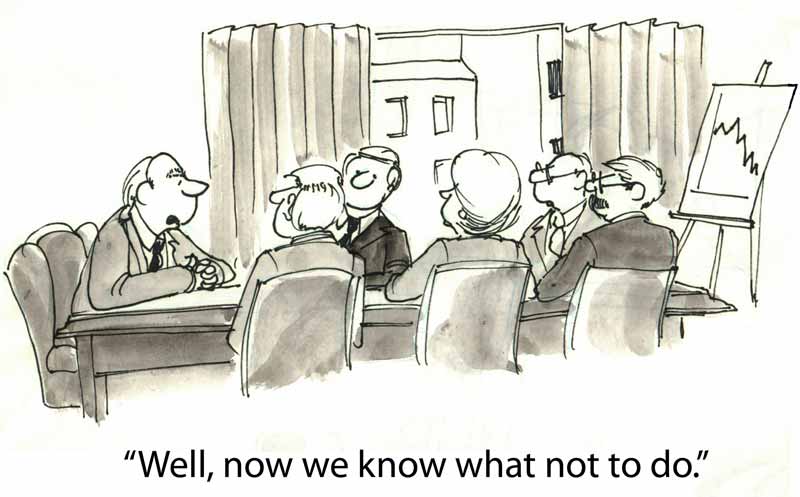
I guess I had a pretty good career. I don’t want to blow my own trumpet, but going to 5 World Championships and being selected for 2 Olympic Games is all right. Added to that fact, I won medals at World Senior, u-18, and European Senior, u-23 and u-20, as well as a fair few national medals. I think it’s fair to say I did quite a lot right. But I also did plenty of stuff wrong. In times of reflection, I sometimes look back and wonder what I would have changed. Learning from mistakes is important (so important that I wrote the article Mistakes: Why They Happen; How We Can Avoid Them), but, unfortunately, to learn from a mistake means that you have to make it. There is another way – you can learn from the mistakes of others. Part of me being a coach is helping the next generation and passing on what I’ve learned. Here is your chance to learn from some of the things I did wrong.

Not Listening To My Coach
I’ve been lucky to work with some high-class coaches during my career. I’ve learnt so much from each of them, and they have all made an impression on my training and coaching philosophy. Mike Leonard, my first coach at my athletics club, took me from a reasonably good 13-year old−I ran 12.0 in my first race−to the best 14-year old in the country. Under him, I won all of my Youth and Junior medals. Malcolm Arnold coached me at a time when I moved from a promising junior athlete to a competing at the World Championships and Olympics Games. I had a lot of growing up to do, and Malcolm taught me how to conduct myself like a high-level athlete. Michael Khmel, my third and final coach, taught me so much about sprint technique. He also exposed me to a whole new set of coaching ideas and philosophies that he had gained through his upbringing in the USSR, coaching in Australia, shadowing top coaches from the USA and finally coaching some really talented British athletes.
Clearly, these coaches all had a wealth of knowledge and practical experience that I can only hope one day to possess. As an example, Malcolm had his first Olympic Champion and World Record holder at an age three years younger than I am now. And yet I still used to think I knew better than them. Whether it was doing extra training when I should have been resting or prioritising one race when I should have been doing another, there are plenty of times when I should have listened to them as opposed to going with what I thought was right.
Learn from me – Find a coach that has a vast amount of knowledge and experience. Let him or her coach you. Learn from them, and utilise their experience.

Listening To My Coach
Yes, this is a direct contradiction to my previous point. Stick with me here. Although I always had good coaches, no single coach is perfect. They all have flaws in their knowledge, approach, or people skills. Sometimes they want you to do something that you’re not sure about – you might have a different idea, but they won’t listen to it. They might think one exercise is useful, but you prefer another. They might not want you to do the rehab the physio gave you because they think it is unnecessary and increasing your training load, but you know that the exercises work and make you feel better. They might prescribe a load or training volume that you can’t manage, but they still push for you to do it. They might want you to go to a certain race because people tend to run really well there−it’s in Switzerland−, but you know that you run better at competitions with a big crowd as opposed to really small ones.
Yes, your coach in undoubtedly brilliant. But they are also human, and that means that they are wrong some of the time.
Learn from me – Communicate properly with your coach regarding how you feel (I’m terrible at this). Explain the reasoning behind your decision. And, sometimes, just ignore what the coach says and do your own thing – if you’re wrong suffer the consequences (see point #1 for more on this).

Testing Everything!
One rep max. Five rep max. Reaction time. 10m from blocks. 30m from blocks. Flying 30m. 60m from standing. 100m from standing. 200m from standing. 300m from standing. Peak bar velocity for power clean / snatch / squat. Peak power for power clean / snatch / squat / bench. Peak isometric power. Body weight. Skin folds. Girths. Medball throw. Standing long jump. Five bound distance. These are all the things that I can remember testing and measuring during my career. Now, there isn’t anything wrong per se with testing, so long as you put the test in its rightful place. The only real test that matters is how little time elapses between the gun going off and you crossing the finish line in an official competition. Hopefully, the time that elapses will be less than the other people in the race. Ideally, this elapsed time will be the shortest amount of time it has ever taken you to both react and cover the race distance. Your performance in every other test is largely irrelevant to this; if you improve in all your tests but get slower in a race, then monitoring those tests hasn’t been worthwhile (or at least hasn’t given the correct signal).

Instead, athletes and coaches use surrogate markers to measure improvement, in the hope that an improvement in these markers will lead to an improvement in race performance. Some of these markers make more sense than others; flying-30m time, for example, is strongly linked to sprint performance. I ran my fastest ever flying-30 within four weeks of running my fastest ever 100m. My standing 60m and standing 100m times are exactly the same as my fastest race times, which makes sense. There is no reaction times in these tests, which offsets the smaller amount of adrenaline that occur within the training environment. The rationale for other tests may be sound; improvements in one repetition maximum often means an improvement in strength, which could mean that you can produce more force when you run, and hence run quicker. But consider this. When I ran my 60m and 100m PBs, my weight room 1RMs were 127.5kg in the power clean, 200kg in the squat, and 110kg in the bench. In 2010, I ran 10.38 as my seasons bests; at this point my weight room 1RMs were 142.5kg in the power clean, 225kg in the squat, and 145kg in the bench. So getting stronger doesn’t necessarily mean getting quicker – it’s multifactorial.
Testing a lot of markers in training can be useful. When things are going well, it is a powerful motivation tool. Running a flying 30m personal best close to a big race will make you feel brilliant (believe me!). But what if it isn’t going well? What if you can’t get anywhere near your personal best in training? Should you just not bother racing? Clearly, this would be stupid – the whole point of training is to race, and the only test that matters is race performance. When testing is going poorly, it can be incredibly de-motivating. Added to the fact that monitoring a lot of markers during training is both mentally and physically fatiguing and that it focuses on the outcome and not the quality of performance, you can see why a constant and wide-ranging testing regime might not be a good idea.
Learn from me – It’s fine to test things. Make sure that you’re testing things with a large crossover to your event. Only test them at specific intervals, as opposed to a daily/weekly basis. Instead, focus more on the fact that training is a process to enable you to compete well, and training quality doesn’t have to be (and indeed can’t be) high every day.

Getting Injured
Getting injured is rubbish. You miss a period of training, which means that you miss out on a period of adaptation. If you get injured during the season, it means that you may well miss some races, and struggle to be at your best. Prior injury is a pretty good predictor of future injury – meaning that if you injure something once, you are at a slightly raised risk of injuring it again. This is especially true for hamstrings and back issues, as well as recurrent tendinopathy.
Look at me as an example. I suffered my first back injury aged 13 (I fell down the stairs quite badly, which I guess isn’t my fault); I first suffered from disc issues at age 17. By age 20, I had a recurrent back issue, which degenerated until I required surgery at the start of 2012. The surgery was successful, but because that area of my back didn’t move quite as well, extra force was placed on the discs both above and below. These discs then herniated, and left me in a position where I had no option but to retire.
Learn from me – Saying “don’t get injured” is stupid on my part, but I’m using it to illustrate a point. Anyone that does high-level training for a period will get injured. Your job as an athlete / coach is to work alongside support staff to reduce the chances of injury, and once an injury occurs reduce the chances of re-injury occurring. This means identifying risk factors, understanding the forces and movements required in the sport, and managing training load and progression correctly. If you get injured, don’t just sit back and accept it. Do everything in your power to come back quicker, and better, than before. I tore my hamstring very close to the Olympic trials in 2008, but instead of stressing about it, I focused all my energy on getting back to my best. After my back surgery, I was told I wouldn’t be able to start running until the end of August. Instead, I did rehab four times per day, and did my first running session in June.

False Starting
The whole purpose of athletics is to race. All the training you do is in order to race, and race well. So travelling to a competition to do a false start and getting disqualified makes no sense. Just don’t do it.
I was only disqualified once in my life for a false start. It was at the semi-finals if the 2009 National Indoor Championships. I’m not sure why I did it, and because it only happened once I treat it as an isolated event. But after that race, I made even more effort to ensure that I didn’t false start in training.
Learn from me – False starts are always unacceptable, no matter what the situation. Reacting to the gun is a skill, and as such you need to practice that skill by doing it correctly each time. Every time you false start in training, you’re ingraining poor practice and bad habits. Instead, learn to react quickly. Coaches – is it worth stopping a training session if your athlete false starts or punishing them in some way?

Making Training Specific
Training specificity is interesting. It makes sense that in order to be a good sprinter, you need to sprint. You also need a number of exercises that replicate the movements, forces and physiological dynamics of the event you’re doing, such as plyometrics. I’m not saying you shouldn’t do this. The danger comes when everything you do as an athlete is specific. Being highly specific is fatiguing – in the case of sprints it will cause a great deal of central nervous fatigue. It’s also boring, as the number of exercises you do is limited, and they have to fulfill specific criteria.
The best coaches that I’ve seen or read about often take a step back from specific work. Charlie Francis utilized tempo. Dan Pfaff has general strength circuits. Malcolm Arnold gave us some very general training sessions. Michael Khmel used to programm, in general, movement-based exercises too. The key here is that by doing these exercises and sessions, you are maximizing your performance and work-rate in the highly specific sessions. Taking time to learn general movement skills is useful when it comes to highly specific exercises, and you will have the muscular conditioning to handle these exercises. Energy system development and body composition changes can also occur through these general training sessions, often to a greater extent than in those specific sessions.
Learn from me – Do specific sessions. Make sure you mix them up with plenty of general training sessions that promote movement skills and general physical literacy, as well as energy system development and rehabilitation exercises.

Gone Crazy Over Supplements
When you get drug tested, you’re provided a box on the piece of paper in which you can write what medications and supplements you are on. This is so that if you fail the test, you can go back and have recorded what you were taking, to see if they are cross-contaminated with a banned substance. This box is five lines in size. For a period of my career, I was taking so many supplements that I had to request and additional page in which to write them. Looking back, this was stupid. I think the problem I had was that nutrition was one area of my training that I could have complete control over. I was responsible for what was going to go into my body, and I was going to make sure that my nutrition was better than any of my competitors. So every time some evidence (no matter how thin) for a certain supplement came out, I had to make sure I was taking it. It helped that I was sponsored by a supplement company too!

Here’s the thing though – all these supplements can’t make you that much better as an athlete; certainly not as much as you hope. The evidence is really good for some supplements, such as protein, colostrum, caffeine and creatine, but seriously lacking for others. Instead, it is much better to focus on having a really good diet – you can’t “out-supplement” a poor diet, no matter how hard you try. To this effect, I have reformed myself somewhat. I make sure I eat as close to 10 servings of fruit and veg per day to cover most of the vitamins. I eat plenty of meat to cover other vitamins, minerals, and protein. And I supplement smartly – in the last year of my career I was taking whey protein (it’s very convenient), colostrum, omega-3, creatine, and vitamin D, and a probiotic. I performed as well as ever, and drug testing became much easier.
Learn from me – Focus on the simple things first: Diet, sleep, recovery, good training. Then layer in supplements that have a decent amount of evidence behind them. Don’t get sucked into the trap of thinking more is better; instead, make smarter decisions.

Not Learning The Correct Technique
At the start of my career, and throughout a large proportion of my senior level competitions, I though running quicker meant trying harder. The harder you tried, the closer you would get to your capabilities at that time. Running technically correctly didn’t fit in with this hypothesis, because it required sessions done at a lower intensity to ingrain the technique, making it natural. That not to say my initial technique was terrible – it was certainly very effective, and I was doing the basic things well. However, it wasn’t until I started working with my final coach, alongside a biomechanist, that I really began to understand the importance of sprint technique, and what I had been doing wrong. I had to spend a long time un-learning my old movement skills and habits, and then learning the new movement skills until they became natural. This was an incredibly frustrating and difficult process. It is much better to learn the correct technique at a younger age, as your brain is more malleable and able to pick up the new skills easier and quicker. I wish I had known what I know now at the start of my career, aged 14.
Learn from me – Always focus on technique. Make sure the correct movement patterns are ingrained in your running activities, and constantly seek to refine them. Remove bad movement habits as quick as possible. Coaches – make sure that technical proficiency is a priority, especially when coaching younger athletes.

Doing Something In Competition That You Have Not Practiced In Training
A few times in my life, I have had to pull out of a race at the last moment because of cramp. If you have read #5, you will be aware that I think not competing is criminal. Each time that this happened, it was because I had tried something for the first time in that competition – usually a different caffeine strategy. Instead of sticking to my tried and tested routine, I was trying something different. The first time I was experimenting with caffeine pills I took 8 and cramped up (I also didn’t sleep until 5am). What I learned from this is that not only is 400mg of caffeine in one go a lot, but taking caffeine in its salt form makes cramping more likely. Another time I was testing a caffeine regime to see what my tolerable upper intake limit was. I can tell you that at levels above 4.5mg/kg body weight, some pretty horrible things happen to me. On the plus side, I did learn valuable lessons from these mistakes – I now know to take less than 400mg caffeine and to do so in liquid form. BUT – I should have practiced this is training, where cramping up is an inconvenience as opposed to a nightmare.
Learn from me – Find a pre-competition routine and stick to it. Routine is good as it allows your mind to recognise that a competition is happening. If you have a checklist built into the routine it all becomes automatic, which saves your mental capacity to focus on the task at hand – namely competing. Once you have this routine, any major deviation from it should be practiced and evaluated in training first. This decreases the likelihood of something going wrong and increases the likelihood of you being able to compete to the best of your ability, which is why we do athletics.

Focusing On Trying To Beat Someone, As Opposed To The Race
People are motivated to succeed by different things. I always just wanted to get the most out of myself, and so for me going into a race I generally didn’t focus on whom I was racing, but instead on the process of racing well. A few times in my life, I forgot about this, and my performance suffered greatly.
Back in 2008, Dwain Chambers was making a comeback. As someone who had been both pretty successful the year before, and also a prominent anti-drugs athlete, there was a lot of media attention on my thoughts about this. My thoughts then are as they are now – people who systematically take drugs, that they know are banned, should in turn be banned for life. I have nothing against Dwain Chambers as a person, he is a nice guy, very helpful, and I think he sincerely regrets the mistakes he has made. However, because I think systematic, deliberate drug cheats should be banned for life, you can guess my opinion on whether or not he should be allowed to compete. The mistake I made here was to let my personal opinions become the main topic of races, and so the media began to hype up races between Dwain and myself as a “grudge match.” The smart thing for me to do here would have been to try and defuse the tension and not let my personal feelings cloud my professional duty, i.e. run quickly. Instead, I wanted to beat him. Not just beat him, but smash him. I can honestly say I’ve never wanted to beat anyone so badly (which in hindsight was unlikely as he is now European 60m record holder). The effect this had was that it increased the pressure on me (I had to beat him), reduced my concentration on the race itself, and potentially increased his motivation to beat me. The result was that Dwain won, I ran terribly, and I was demotivated for a period.
Learn from me – Don’t get emotionally involved in a race to the point where you have to be successful. Instead, focus on things you can control. You cannot control what your rivals do, and short of physically attacking them (generally frowned upon), you can’t really affect how well they will run. Control the controllables, and leave those things that are out of your control alone.

Equating Body Fat With Performance
I’ve always been a bit of a fatter athlete. When I won the European Juniors, I was roughly about 14% body fat, which statistically is average for an adult male. When I moved away to university, I was told to try and get this below 10%, which I did by changing my diet and being hungry a lot. Then, in preparation for 2007, I dropped down to 7.5% body fat, which is leanest I have ever been. I now believe that this is too lean for my body type, as I was getting ill a lot and felt run down. However, because I equated being lean with running quickly I tried to stay at this level of body fat for about 4 years, with the result being a massive underperformance (I’m not sure if this is the main reason for my spectacular under-performance in 2010, but I certainly think it was a factor).
In all cases, it is better to be healthy and fast than lean. The times I ran aged 18 at 14% body fat were better than the times I ran at 24 at 8% body fat. The truth is that carrying excess fat isn’t a good idea, but in practical terms how much difference does 0.5kg make and is it worth the effort to lose that? Instead, aim to have a good, healthy diet, try to maintain a decent level of leanness, but don’t strive to be ultra-lean; food intake is crucial for performance!
Please share this article so others may benefit.
[mashshare]References
Fulton et al. (2014). Injury risk is altered by previous injury: a systematic review of the literature and presentation of causative neuromuscular factors. Int J Sports Phys Ther 9(5) 583-595



Invaluable article.
Thanks Craig
This was a really interesting article, and considering the amount of hours I spent swimming as a teenager – one I wish I had had twenty odd years ago!
I was lucky on the one hand, the coach I had initially saw my talent and ingrained fantastic technique, I still get compliments now when I swim. However, as I was good all-rounder, the same coach also demotivated me hugely when he asked me to ‘give’ one of the four strokes to another swimming, who could only do backstroke. My confidence in myself was shaken to the core, to the point where my stroke fell apart and I never really recovered it the whole time I was competing. Completely psychological, as when I got back in the pool in my late twenties I found myself zooming along doing backstroke happily.
Competing at any sport is so difficult and so personal, having a team of people to lean on that you trust is important!